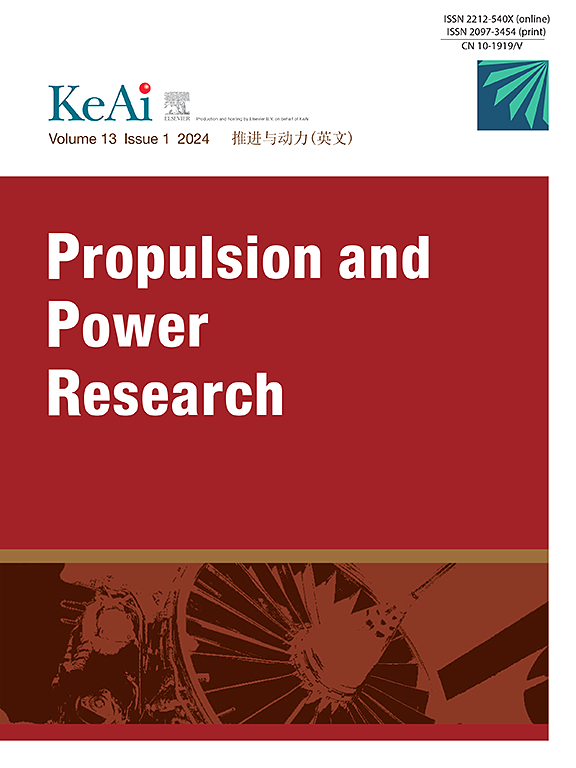Temporal stability analysis and thermal performance of non-Newtonian nanofluid over a shrinking wedge
IF 5.4
2区 工程技术
Q1 ENGINEERING, AEROSPACE
引用次数: 0
Abstract
The authors use a temporal stability analysis to examine the hydrodynamics performance of flow response quantities to investigate the impacts of pertained parameters on Casson nanofluid over a porous shrinking wedge. Thermal analysis is performed in the current flow with thermal radiation and the viscous dissipation effect. Boungiorno's model is used to develop flow equations for Casson nanofluid over a shrinking wedge. An efficient similarity variable is used to change flow equations (PDEs) into dimensionless ordinary differential equations (ODEs) and numerical results are evaluated using MATLAB built-in routine bvp4c. The consequence of this analysis reveals that the impact of active parameters on momentum, thermal and concentration boundary layer distributions are calculated. The dual nature of flow response output i.e. is computed for various values of , and the critical value is found to be , , and . It is perceived that the first (upper branch) solution rises for the temperature profile when the value of thermal radiation is increased and it has the opposite impact on the concentration profile. Thermal radiation has the same critical value for and . The perturbation scheme is applied to the boundary layer problem to obtain the eigenvalues problem. The unsteady solution converges to steady solution for when . However, an unsteady solution diverges to a steady solution for when . It is found that the boundary layer thickness for the second (lower branch) solution is higher than the first (upper branch) solution. This investigation is the evidence that the first (upper branch) solution is stable and reliable.
非牛顿纳米流体在收缩楔上的时间稳定性分析和热性能
作者使用时间稳定性分析来考察流动响应量的流体动力学性能,以研究相关参数对多孔收缩楔上卡森纳米流体的影响。对具有热辐射和粘性耗散效应的电流进行了热分析。利用Boungiorno模型建立了卡森纳米流体在收缩楔上的流动方程。利用一个有效的相似变量将流动方程转化为无因次常微分方程,并利用MATLAB内置的bvp4c程序对数值结果进行评估。分析结果表明,计算了有效参数对边界层动量、温度和浓度分布的影响。对于βT=2.5、3.5、4.5的不同值,计算了流动响应输出Cfx的双重性质,发现临界值为- 1.544996、- 1.591和- 1.66396。可以看出,当热辐射值增加时,第一分支(上分支)溶液在温度剖面上上升,而对浓度剖面有相反的影响。Nux和Shx的热辐射具有相同的临界值。将扰动格式应用于边界层问题,得到特征值问题。当γ≥0时,非定常解f(η,τ)收敛于τ→∞时的定常解fo(η)。然而,当γ<;0时,非定常解f(η,τ)在τ→∞时发散为定常解fo(η)。结果表明,二阶(下分支)解的边界层厚度大于二阶(上分支)解的边界层厚度。这一调查证明了第一(上分支)解是稳定可靠的。
本文章由计算机程序翻译,如有差异,请以英文原文为准。
求助全文
约1分钟内获得全文
求助全文
来源期刊

Propulsion and Power Research
Multiple-
CiteScore
7.50
自引率
5.70%
发文量
30
期刊介绍:
Propulsion and Power Research is a peer reviewed scientific journal in English established in 2012. The Journals publishes high quality original research articles and general reviews in fundamental research aspects of aeronautics/astronautics propulsion and power engineering, including, but not limited to, system, fluid mechanics, heat transfer, combustion, vibration and acoustics, solid mechanics and dynamics, control and so on. The journal serves as a platform for academic exchange by experts, scholars and researchers in these fields.
 求助内容:
求助内容: 应助结果提醒方式:
应助结果提醒方式:


